Rats can be a very frustrating pest to deal with. They can cause a great deal of property damage and carry dangerous diseases. On top of that, rats reproduce very quickly, so it is imperative you take care of your rat problems as soon as possible
Rat traps are our method of choice when it comes get getting rid of rats. When placed properly and in sufficient numbers, they are extremely effective.
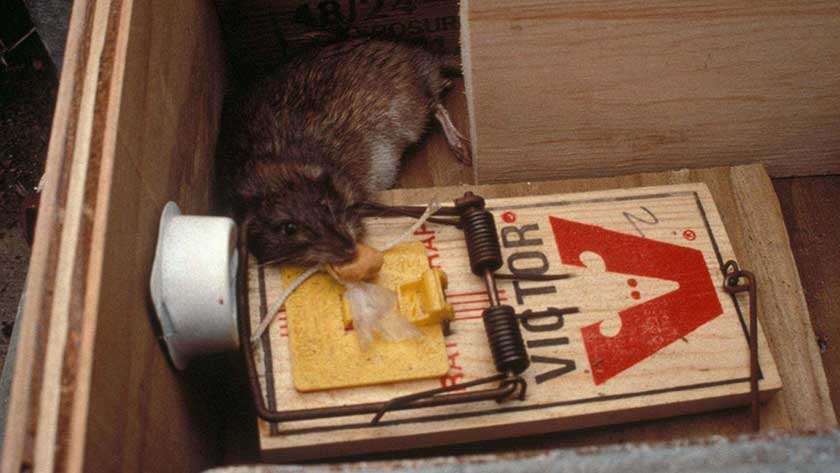
In this guide, we will be discussing our favorite traps and some pro tips. If you’d like, you can also check out our page on the best baits for rat traps and pro trapping tips here and our full guide on how to get rid of rats here. Want to learn more about traps before seeing the ones we recommend? Keep reading!
Here Are the Best Rat Traps Updated in 2023
1. Made2Catch Metal Rat Trap, Galvanized
| Trap Type | Snap Trap |
| Dimensions | 6.6 x 3.5 x 0.9 inches |
| Weight | 4.3 ounces |
Made2Catch Metal Rat Trap are holding the first place in 2023 as well. This mechanical trap is top of the line. The galvanized metal makes it easy to clean after a catch, giving you the freedom to reuse the trap multiple times. It comes equipped with a powerful spring load specially designed for larger rodents. With the spring-loaded system, no poison or chemicals are needed.
Made2Catch is one of the best choices for the consumer and here’s a quick recap of why it’s a great pick,
- All metal galvanized trap made easy for clean and reuse
- Powerful spring-loaded system
- No chemicals needed
The cons of this trap can be the method of the trap. The snap trap can be dangerous for children and pets and needs to be placed in a location where it’s not easily accessed. It also can be intimidating to set initially.
2. Victor Metal Pedal Rat Trap
| Trap Type | Snap Trap |
| Dimensions | 1.1 x 4.1 x 10.2 inches |
| Weight | 4.8 ounces |
The Victor brand is famous for a reason. This trap is one of the cheapest most effective ways to get rid of your rodent problem. It has a strong spring-loaded system capable of exterminating rodents. Here are some reasons to consider the Victor Metal Pedal,
- Cheap and effective
- Environmentally friendly design
The Victor trap is one of the most commonly used traps on the market. However, it can be messy, and the wooden base does not provide clean or effective reuse. It’s a one and done style trap.
3. UCatch Tunneled Rat Trap
| Trap Style | Snap Trap |
| Dimensions | 8 x 6 x 5 inches |
| Weight | 6.4 ounces |
The Ucatch combines the safety of the enclosed trap with snap trap methods. Built-in with the same tunnel systems electronic traps use, the trap is embedded safely inside the box. This is great for the safety of your pets and children and at a cheaper price. Here are some reasons to consider the Ucatch,
- Safer mechanical method
- Affordable non-toxic method
- Not reliant on a power source
The Ucatch is an effective style trap, but you’ll need to remember to accommodate space for the box style trap and use strong-smelling bait to lure them into the tunnels. Cleaning the tunnel system can be tricky as well.
4. Pest Control Rat Traps
| Trap Type | Snap Trap |
| Dimensions | 11.3 x 6.7 x 3.1 inches |
| Weight | 1.4 pounds |
The Pest Control Rat Traps are an affordable choice for the mechanism traps. Unlike the wooden base traps, this trap is made of washable material for reuse. Simply, bait and set the trap. Once triggered, dispose of rodent, was and reuse. Some reason to consider this trap,
- Simple and reusable
- Affordable
- No escape snap trap
The snap trap method is affordable, but as mentioned earlier these are not the safest for pets or children.
5. Kensizer Small Animal Humane Live Cage Rat
| Trap Type | Live trap |
| Dimensions | 10.5 x 5.5 x 4.5 inches |
| Weight | 10.4 ounces |
The Kensizer trap has an exclusive patented design that will keep the rodent safe for release. This is one of the best human rat traps on the market. This non-toxic approach is safe to have around your pets. If you’re looking for a non-lethal approach to solving your rat problem the Kensizer is a great fit and here’s why,
- No harm is done to the animal
- Non-toxic and safe for your pets
- Patented highly effective design
The con for the Kensizer trap is possible re-entry. This type of trap is the most humane method you can use but beware you might find your furry friend back in your house once again.
6. AB Traps Pro-Quality Live Animal Humane Trap
| Trap Type: | Live trap |
| Dimensions: | 10.5 x 5.5 x 4.5 inches |
| Weight: | 9.6 ounces |
The AB trap provides one of the most secure traps on the market. Its patented technology ensures the rodent will not escape upon entrapment. The trap comes equipped with a highly sensitive trigger method which is completely harmless. Here are some reasons you should consider this humane trap,
- It’s simple, effective and reusable
- No toxins needed simply set the trap
- Safe to have around pets
The Cons for the AB trap are like other open trap methods. You want to make sure to release the litter critters a good distance away from your home.
7. Victor Electronic Rat Trap
| Trap Style | Electronic Trap |
| Dimensions | 9.2 x 3.8 x 4.3 inches |
| Weight | 1.1 pounds |
The victor electronic rat trap is one of the nicest traps out there, but it does come with a steeper price tag. With this style trap, you receive the luxury of a lethal trap with no mess and no poison. Once the trap is activated it comes with a convenient light indicating the trap has been activated. This trap is a good choice for various reasons,
- Clean and chemical-free lethal trap
- Trap activated with light indicator
- Battery or outlet power source
The electronic trap method is one of the cleaner ways to exterminate a rat. Although, you’ll need to keep it charged to be effective. Additionally, you’ll need to have effective bait to lure them into this style trap.
8. Electronic Rodent Zapper
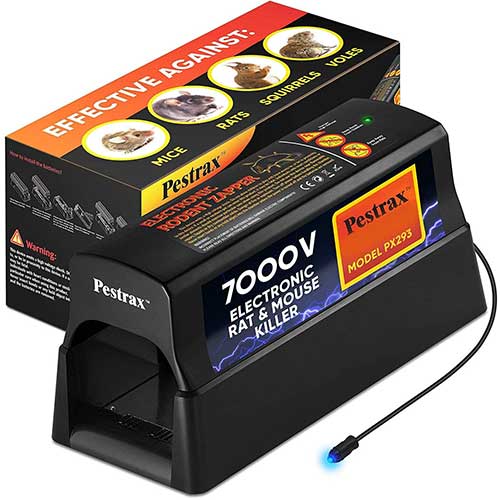
| Trap Style | Electronic Trap |
| Dimensions | 10.1 x 4.37 x 4.37 in. |
| Weight | 1.8 pounds |
The Electronic Rodent Zapper is a quality purchase when seeking a lethal trap. If you’re seeking a non-toxic clean way to exterminate rodents this is a great choice. The trap also comes with a lifetime warranty to protect you against any loss if the trap malfunctions. Some reasons to consider the Electronic Rodent Zapper are,
- Smart Circuit Technology
- Non-toxic and clean
- Lifetime Warranty
The Electronic rodent zapper has the same cons as other electronic traps on the market. It is also a boxier trap and can take up more room in your home.
Related Article: 17 Best Ways to Get Rid of Rats
9. KINGMAN Mouse Trap Rat Trap Glue Trap/Board
| Trap Type | Glue Board |
| Dimensions | 11.6 x 5.5 x 4.2 inches |
| Weight | 2.5 pounds |
The Kingman trap is one of the simplest to set. All you must do is unpackage and place in the desired spot. Place some bait on top of the glue and wait for the rodent to cross over the top of the glue board. Once trapped you can dispose of. Here are some reasons why you should consider the glue board,
- Easy to set up
- Affordable
- No mess no toxins
Glue boards are the easiest to set up, but not the most fun to dispose of. Often, you’ll have a live rat on the board as you dispose of it. You’ll want to be careful as you throw them away. Additionally, they are a one-use trap.
10. Catchmaster 402 Baited Rat Traps Professional Strength
| Trap Type | Glue Board |
| Dimensions | 12 x 6 x 4.5 inches |
| Weight | 2.35 pounds |
Catchmaster has an effective glue board method. If you’re seeking a trap with low maintenance the glue board method is one of the easiest ways to go about it. This model advertises its ability to trap snakes as well. It might be a two for one bargain. Here are some reasons to snatch up this trap
- Affordable and low maintenance
- Easy disposable
- No mess
As mentioned earlier the glue traps can be easy to set up. However, they can be less effective if dust or dirt gets onto the surface. If you find dust or grass build up on the board surface. The best practice is to replace the board. Glue traps are most effective indoors.
To catch the rat scurrying around your house, it can be a lot easier if you know something about their habits. Having knowledge on their diets and activity can go a long way to trapping them. A wise first step before buying your traps is to analyze the situation.
If you can determine the level of infestation, that’s a good start. One obvious way is to note how many rats you see daily. If you’re watching television and within an hour you see three or more rats running along your walls, you might need to buy a few more traps. However, if once a week you catch a rat running down your hallway, one snap trap might do the trick.
Also, you can analyze droppings. If there is a good number of droppings everywhere in your house, that should tell you something as well.
Related Article: Best Rat Poison
Types of Rat Traps (The Pros and Cons of Each)
When choosing a rat trap, you have to decide whether you want to a lethal or nonlethal trap. Typically, we recommend lethal traps but there are some homeowners who have other small pets who they do not wish to risk harming, or they simply do not want to harm the rats.
Whatever your approach, we can inform you of all of your options and explain the pros and cons of each.
Mechanical Rat Traps
A mechanical trap operates with a trigger mechanism that releases a spring-loaded metal arm. When you think of a traditional rat trap you’re probably imagining a mechanical trap. The trap comes on a small plank of wood or metal with a trigger and a snap bar. Once armed, the bait lures the rat into the trap, which causes the trap to trigger.
Mechanical traps are usually the cheapest options, however, some homeowners opt not to use them for a variety of reasons. They include, not wanting to harm the rat, not wanting to harm other animals or pets, fearing children may accidentally trigger the traps, etc. When setting mechanical rat traps, be sure to watch your fingers and exercise caution not to accidentally trigger the trap when placing it. Additionally, you want to be mindful to place them where your children and pets cannot reach them.
How to set: The first thing you want to do before you set the trap is to apply the bait. There are a number of great rat baits, we have a full-page rat trap baits and trap setting tips you can reference here. Melted cheese and peanut butter are two of our favorites.
You want to spread the bait into the holes of the trigger and make sure you pack it in. This way the rat has too really dig into the trigger to get it out (which will set off the trap). Once you have the bait in, place the trap in the desired location. Hold the baseboard and gently pull the snap bar in place. On the trigger panel is a notch, which will connect to the hook lever. Once this is done the trap is set and ready to go.
Nonlethal Rat Traps
There are multiple styles of non-lethal traps, but they all operate in a similar manner. They consist of a large plastic or tin box. The bait lures the rat into the box, which sets off a trigger that snaps the exit shut. Once the exit door is shut the rat is trapped. You then can take the rat outside and release it into the wild.
Nonlethal traps are the most humane option. However, you want to check the trap daily or they can become a lethal trap (by starvation). Nonlethal traps are typically more expensive, especially when you factor in the fact that you will likely need multiple traps to solve larger rat infestations.
When releasing the rat into the wild, it’s a good idea to relocate a good distance away from your house so the rat doesn’t return to your residence.
How to set: Once placed in the desired location open the trap door. After the door is open, make sure you bait the trigger. Once the trigger is baited you’ll want to run the compression bar, which is connected to the handle, to the pressure switch. The pressure switch is connected to the trigger, and once activated it will slam the door shut, trapping the rat.
Glue Boards Rat Traps
The glue board trap is a fairly uncommon trap type used for rats. Essentially, to set this trap you layout a hollow rectangular box or flat board. When the rat passes through it gets stuck in the glue unable to escape.
This trap can be a type of non-lethal trap; however, you’ll need to free the rat from the glue, which can be a messy process. However, if you’re seeking a nonlethal approach that is very cost-effective, can be a great option.
How to set: Glue boards are one of the easiest traps to set. Simply unpackage the trap and set into place. Keep in mind it’s smart to run the trap parallel to the wall to give the rat two entry points instead of one, (if this is the box version) increasing your chances.
Electronic Rat Traps
The electronic trap consists of a box system like the nonlethal trap, but inside the box is a live charge. Once the rodent enters the box it will step on to an electrically charged panel, which will send a shock through the rat killing it instantly.
The electronic traps are battery charged and run to an outlet. You’ll need to check the batteries periodically, if not plugged in, to make sure the trap remains effective.
How to set: This is the only trap on the market which requires a power source to operate. You’ll need to make sure it has a charge before you set it. Once you have the trap in position, you can open the top flap to insert your bait. After the bait is set make sure to turn the power switch to the on position (be sure to check the trap instructions manual for detailed instructions specific to that trap). Once powered on the trap is set and ready to go.
Related Article: Do Ultrasonic Pest Repellers Work
Information About Rats
Rodents are intelligent
There’s a reason why scientists use mice and rats in experiments. They’re able to analyze and adapt to there surroundings. They have keen senses of smell and can learn from their past mistakes. If they think something is fishy about the trap in their path they might not tread near it. If one rat becomes trapped, others will be alerted. Additionally, if they pick up your scent or a pet’s scent on the trap this could detour them from engaging with the bait.
Rats prefer to run along walls to avoid being detected. They’re also most active during the night hours because they’re nocturnal. These attributes make it difficult to trap them, and strategic planning can help increase your odds.
Some clever tips to trick your furry foe,
- For the first week place a large amount of bait on the trap but don’t set it. This will get them accommodated to the new item without spooking them.
- Set multiple traps within the same apace. Place them at the right angle on the drywall.
- Use different types of traps around the house.
- Avoid contact with pets before setting traps.
Rats aren’t the cleanest
Having a rat in your home isn’t the most comforting thought. You might play this game where you try to ignore them and hope they’ll eventually leave, but this isn’t recommended. The main concern of having rats in your home is cleanliness.
Rat’s carry disease. Due to their scavenging nature, they pick up a lot of bacteria. The bacteria are carried throughout your home and into your cabinets, bathrooms, you name it. Therefore, if you find a rodent has gotten into some of your food throw it out.
They also can spread it throughout their mischief (a family of rats). Then you have multiple rats carrying unwanted bacteria throughout your home.
One thing to note is your pets. Your pets are natural hunters and can track down a rat or two. You might have a little sense of pride when your dog or cat carries back a rat in their mouth. Although they did manage to hunt down a rat, they might have picked up a disease from chewing on the rodent.
This is not to say every rat you see in your home is disease ridden. You have no need to worry and run out and purchase traps immediately. However, it’s a good idea to have a short-term plan to evict these rodents from your home.
Frequently Asked Questions
What’s the difference between a rat and a mouse?
To the untrained eye, it might be difficult to decipher a rat from a mouse. They look similar, move in a similar manner, and sound similar. However, there are key differences and these differences affect your ability to effectively trap them.
For starters, the two rodents are not even the same species. It would be comparable to a horse and a mule. They have different body structures, diets, mating habits. If you were to study them you’d see just how different they really are.
Rats
Rats are larger and have distinguishable body features. Typically, a rat is anywhere from one to two inches longer than your common mouse. Here are a few notable features of rats,
- Can grow up to 35-40cm in size.
- Fur color ranges from white, gray, black, or brown.
- The head of a rat is more bunt than round
- Tails are thick, long, and hairless
Mice
When it comes to mice they are a little less intimidating, though not desirable to have as tenants. Below are listed the key characteristics of a mouse,
- Can grow up to 20cm in size.
- Fur colors, white, brown, or grey.
- The head of a mouse has a triangular shape to it.
- Tails are thin and hairy.
One of the main reasons to note the difference before trapping is because the traps are not always universal. For example, if you set a mouse-sized snap trap out for a rat; odds are the spring load isn’t powerful enough to kill it. No doubt, it will injure it, but the rat will most likely not cross the trap again.
On the other side of the spectrum, if you set a rat snap trap for a mouse, the spring load is too powerful. You’re probably going to have more of a mess on your hands then you’d bargained for.
If you can identify the species first before trapping this is preferred. If you don’t get a good look at the rodent, you can judge by their droppings. Mice droppings are tiny and clustered together much like small seeds. Rat droppings have a tapered look and maybe one to three droppings in a few square inches.
What Rats like to eat?
Rats have a wide diet and will get into a lot of things that are within their reach. However, a typical diet consists of nuts, fruits, and vegetables. If you have a dog or cat food, they love to chew into the bottom of the bag or hop into it and help themselves. The same goes for large rice bags or oats.
Different species of rats have different diets. If you can’t determine the species based on a quick sighting, remember the stronger the smell of the bait the better.
The obvious sign a rat has been into your food is little holes nibbled into the bottoms of the bag. If you have fruit on your counter and find little bites out of it, that’s another good indicator. However, if you don’t find bites or holes bored into your food sacks. Look for droppings around the bottom of the floor or shelves. Examine the walls of your pantry and look around the corners for small openings.
The best practice to keep your food safe is to keep it off the ground. If you have any containers this is a great way to ensure your food is kept safe. Make sure to clean up the floor of the pantry and keep all food scraps off the ground. Same with pet food, it’s best to feed your pets outside or pour their food into a bowl, where little scraps can’t fall under furniture or closet doors.
If you do end up finding little holes in your drywall, plaster them in. At the very least fill them with some steel wool. Steel wool is a quick cheap solution, but it’s not recommended for permeate use. It’s a good substitute until you get around to plastering the hole shut.
Where to place Rat traps?
If you’ve decided to take the plunge and purchase a few traps. The next question you’ll be asking yourself is where to place them? There are some common areas in or around your household to place your traps. With some traps like the open-faced snap traps, you’re going to want to consider a safe placement location due to pets and or children.
One thing to consider is placing more than one trap. The logic is simple, if you put more than one trap in your house you increase the odds of catching a rat. A good place to consider placing a trap is where you’ve seen the rodent or signs of the rodent.
If you see a rat running down your hallway into your coat closet. The wise choice would be to place a trap in your coat closet. However, if you have not seen the rat, but only found droppings, place your trap in the same area as their droppings.
Rat Trap Placement
Something to consider is placing traps in or around your garage. The garage is one place in which the door to your home is frequently open and sometimes for longer periods of time. Garages are a good fit for glue traps or snap traps. Typically, pets and children are supervised in the garage or they’re not allowed to enter.
Another area to consider placing a trap is in the pantry. Snap traps are not the best choice for this location, because they’re not as clean as the other options. An electric trap or non-lethal method would be a good choice.
When you place a rat trap you want to think strategically. Avoid running your trap parallel with the wall to cover more area. Try and space traps out at least 10-15 feet from one another. If you’re using a snap trap, use the right bait. You want a bait in which the rodents can’t remove from the trigger without setting it off. Think peanut butter or something of that nature. The texture of peanut butter is thick and will fill the holes of the trigger well. You can read more rat trapping tips here.
Conclusion About Rat Traps
We hope this information helps you free your homes from your unwanted roommates. To highlight some of the things mentioned earlier. The best place to start is educating yourself on the species (rat or mouse). From that point try and identify the number of rats you have in your home. You can do this by a sighting estimation or analyzing the number of droppings.
Once you have a ballpark number buy the trap or traps you find that best fit your needs. We’ve listed our recommendations above for your convenience. It’s also best to have an idea of how many traps you’re going to buy and what kind. Additionally, have in mind where you would like to place them throughout your property. Choose a bait that has a strong smell and can’t be easily removed from the trigger panel.
Also, if you found you haven’t trapped any rats within a few days check your bait and or change the location of the traps. We hope this information will help guide you on your journey to a rat-free home.
Related Article: How to Get Rid of Cats
My name is Blane and I’m a life-long resident of Southeastern Louisiana. I’ve been working as Pest Control Technician and Inspector for about 1.5 years now.
I’ve worked in many other industries as well, including consulting, managing, as well as at the ground level in fields including Food Service, Corporate Automotive sales, and finance. Whether it be providing counsel, content, or hands-on support; my goal remains to add value to the lives of the people I serve.
If you have any questions regarding pest control, leave them below. I would be happy to help you out in any way I can.

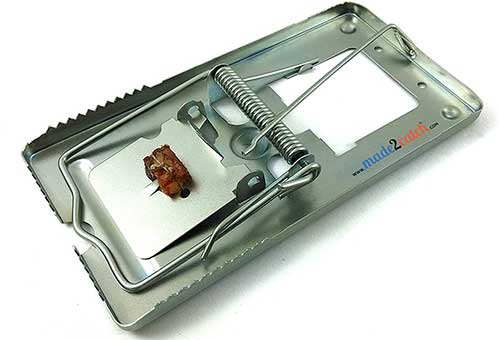
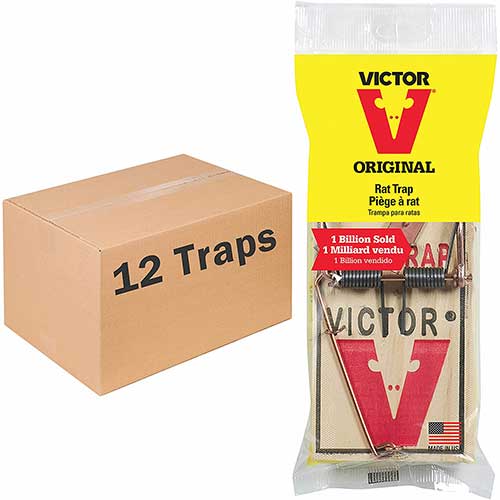
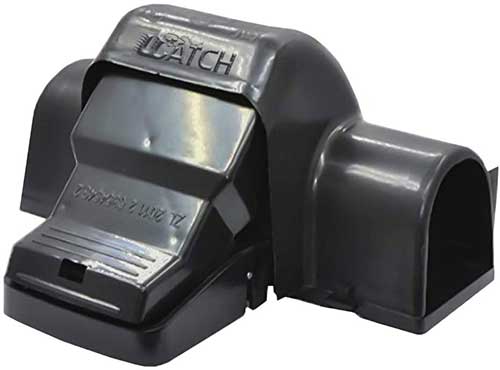
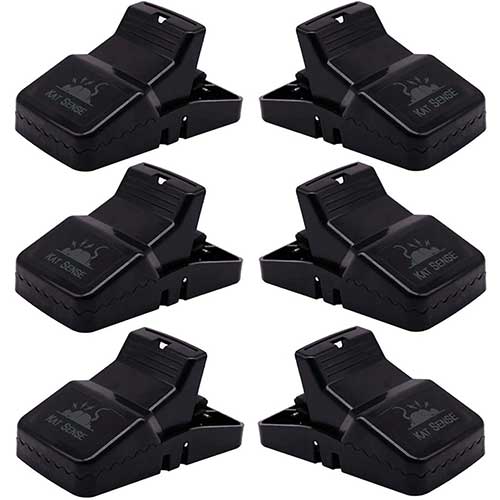
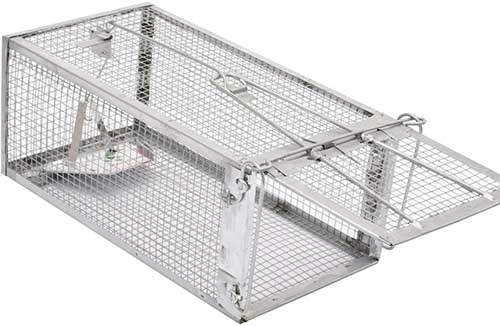
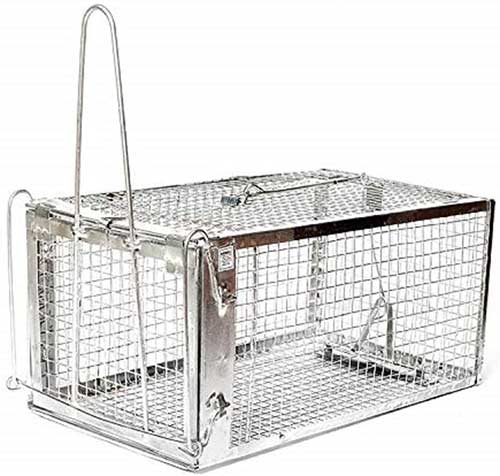
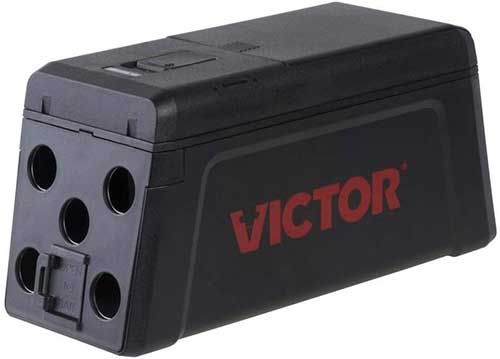
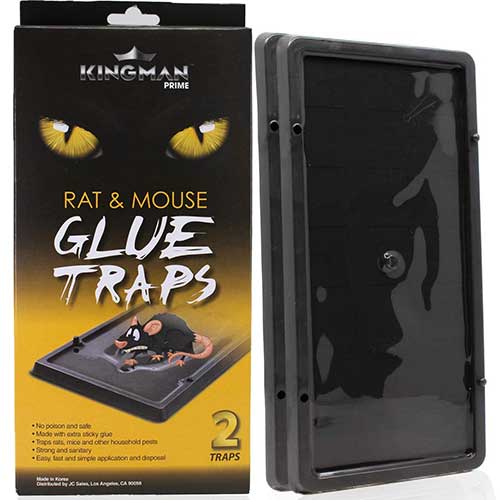
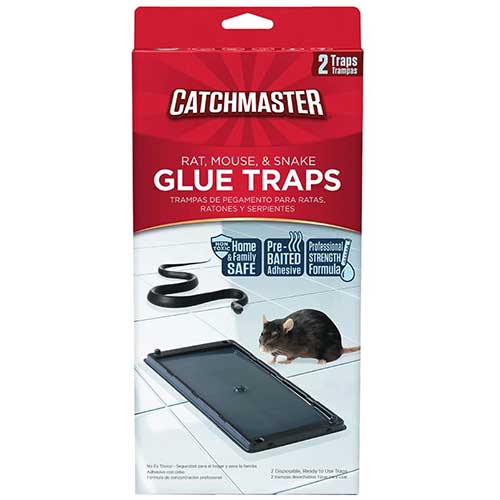
Rats and mice are mainly nocturnal. They usually spend most of the day hiding in cozy dark places, like in your wall cavity or under cupboards etc. When numbers are high or food supply is low they may be more active during the day seeking food. They poop wherever they go, so if you want to know if they are around look for little brown or black poops. Mouse poops are about the size of a grain of rice, rat poops are usually the same shape but 1/2 to 1″ long. Sometimes you will hear them scratching around between walls etc.
Set your traps in the attic near the hole. Vary the baits. Peanut butter is good, cream cheese, bacon, fatty meats, bread, butter, chocolate. Once after seeing mice on my deck I trapped 4 in about 20 minutes after which they ignored the trap. After switching bait another 4 were caught in the next hour.
I would like to know if there are rats and mice in an attic. Do they stay in their spot during the day in the attic? Or do they move away during the day?
I have the AB Traps Pro-Quality Live Animal Humane Trap and the Kensizer Small Animal Live cage. Need to know if I can set outside because I can see the whole where they get in, and I don’t want to close the entrance while they are in the attic. Furthermore, I live in Louisiana, do you know of a good reliable company that you can recommend for such a nuisance.